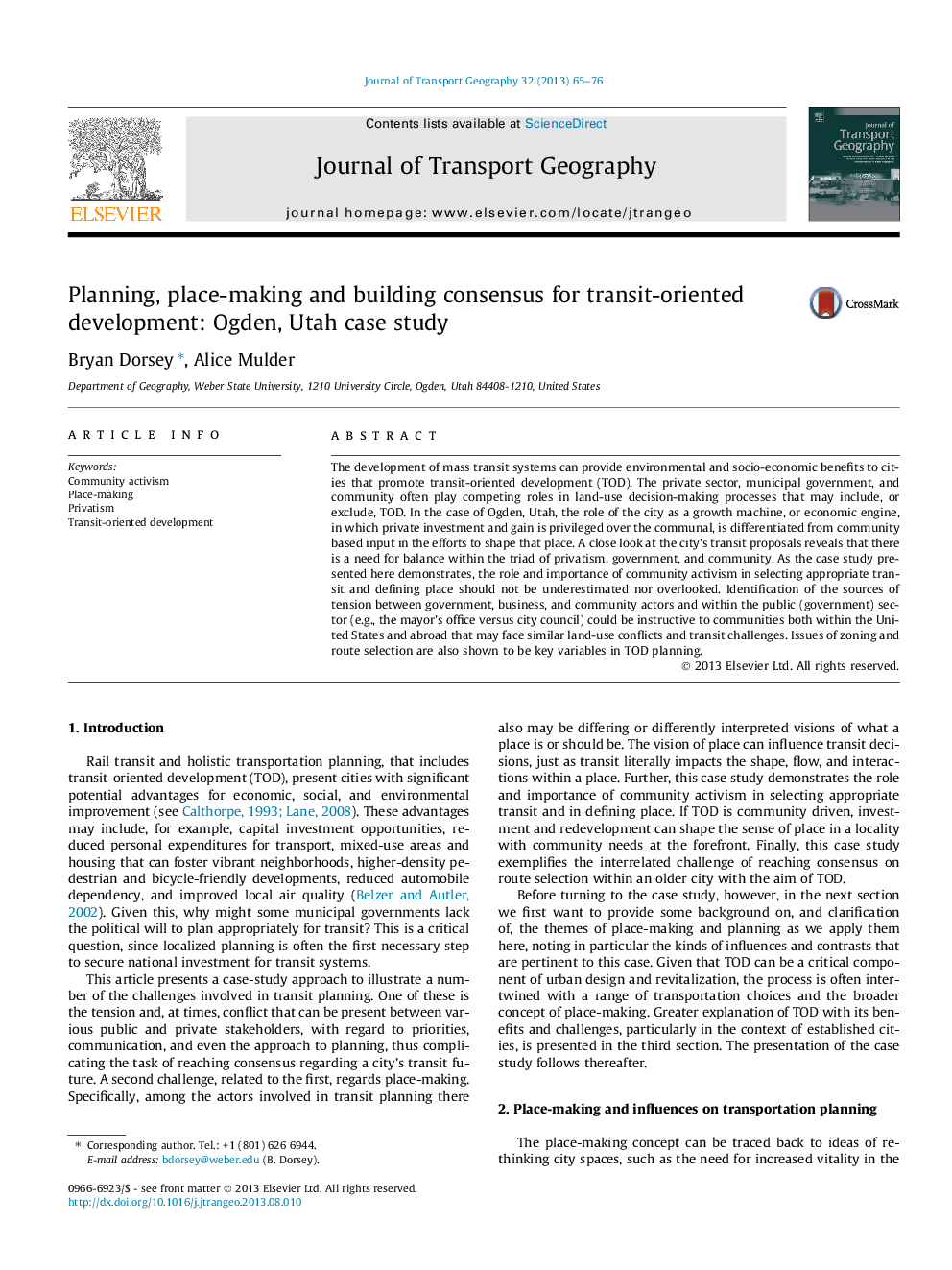| Article ID | Journal | Published Year | Pages | File Type |
|---|---|---|---|---|
| 1059278 | Journal of Transport Geography | 2013 | 12 Pages |
•The private sector, government, and community play competing roles in transit oriented development (TOD).•Evidence shows a need for balance within the triad of privatism, government, and community.•The role of community activism in selecting appropriate transit and defining place is essential to effective TOD.•Issues of zoning and route selection are also shown to be key variables in TOD planning.
The development of mass transit systems can provide environmental and socio-economic benefits to cities that promote transit-oriented development (TOD). The private sector, municipal government, and community often play competing roles in land-use decision-making processes that may include, or exclude, TOD. In the case of Ogden, Utah, the role of the city as a growth machine, or economic engine, in which private investment and gain is privileged over the communal, is differentiated from community based input in the efforts to shape that place. A close look at the city’s transit proposals reveals that there is a need for balance within the triad of privatism, government, and community. As the case study presented here demonstrates, the role and importance of community activism in selecting appropriate transit and defining place should not be underestimated nor overlooked. Identification of the sources of tension between government, business, and community actors and within the public (government) sector (e.g., the mayor’s office versus city council) could be instructive to communities both within the United States and abroad that may face similar land-use conflicts and transit challenges. Issues of zoning and route selection are also shown to be key variables in TOD planning.
